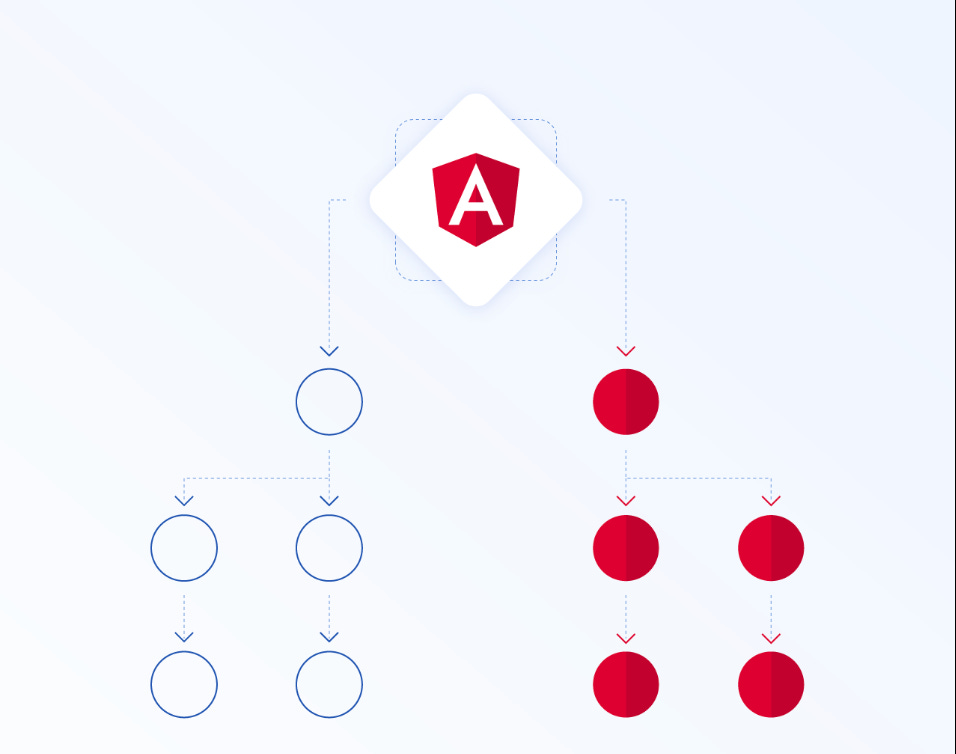Understanding Shadow DOM
Why Angular Prefers Shadow DOM Over Virtual DOM
Web development is evolving, and Shadow DOM is one of the powerful features that make modern web applications more modular and maintainable. It allows developers to build truly encapsulated components without affecting or being affected by the global DOM. If you're a frontend developer working with frameworks like React, Angular, or Web Components, understanding Shadow DOM is crucial.
In this post, we’ll break down:
What Shadow DOM is and when to use it
How Shadow DOM works under the hood
How to access elements inside a Shadow DOM
Shadow DOM vs Regular DOM
Why Angular chose Shadow DOM instead of Virtual DOM
The pros and cons of Shadow DOM
A final summary of what you’ve learned
Let’s dive in!
1. What is Shadow DOM, and Why Use It?
Definition
Shadow DOM is a web standard that provides encapsulation for DOM and CSS within a component. It allows developers to create independent, self-contained elements that do not get affected by external styles or scripts.
When to Use Shadow DOM?
Shadow DOM is ideal for building web components and custom elements where encapsulation is important. Some common use cases include:
UI libraries (e.g., Google’s Material Components, Shoelace UI)
Widgets that need to work across multiple projects without style conflicts
Custom buttons, modals, or form elements with specific styles
Why Use Shadow DOM?
Without Shadow DOM, styles and scripts from one part of an application might unintentionally affect another, leading to unwanted behavior. Shadow DOM helps avoid this problem by scoping the styles and markup within a component.
2. How Does Shadow DOM Work?
Shadow DOM allows developers to create shadow roots, which act as isolated DOM trees inside a regular DOM element.
Example: Creating a Shadow DOM Element
const host = document.querySelector("#shadow-host");
const shadowRoot = host.attachShadow({ mode: "open" });
shadowRoot.innerHTML = `<style>
p { color: blue; font-weight: bold; }
</style>
<p>Hello from Shadow DOM!</p>`;This creates a shadow root inside #shadow-host and encapsulates its styles and content.
Open vs. Closed Shadow DOM
Open: Can be accessed from JavaScript using
element.shadowRoot.Closed: Completely hidden; JavaScript outside the shadow tree cannot access it.
const closedRoot = host.attachShadow({ mode: "closed" });
console.log(host.shadowRoot); // null3. How to Access Elements Inside Shadow DOM?
Querying Elements
When working with a Shadow DOM, regular document.querySelector() won’t work since the elements are encapsulated. Instead, use shadowRoot.querySelector():
const shadowElement = host.shadowRoot.querySelector("p");
console.log(shadowElement.textContent); // "Hello from Shadow DOM!"Event Handling in Shadow DOM
Events bubble up from the shadow tree but stop at the shadow root by default. However, using composed: true makes them propagate beyond the Shadow DOM.
element.addEventListener("click", (event) => {
console.log(event.composed); // true if event crosses shadow boundary
});4. Shadow DOM vs Regular DOM
Feature Regular DOM Shadow DOM Encapsulation No Yes Global Styles Applied Restricted JavaScript Access Universal Requires shadowRoot.querySelector() CSS Isolation No Yes Event Bubbling Yes Limited
5. Why Did Angular Choose Shadow DOM Over Virtual DOM?
Angular opted for Shadow DOM in its View Encapsulation strategy instead of a Virtual DOM (like React) because:
Native browser feature: Shadow DOM is built into browsers, while Virtual DOM is a JavaScript-based solution that React uses for performance optimizations.
Better style isolation: Angular’s View Encapsulation (e.g.,
EmulatedorShadowDom) ensures that component styles don’t leak, making applications more predictable.Performance: Unlike Virtual DOM diffing, Shadow DOM provides native encapsulation without expensive re-renders.
Better for Web Components: Shadow DOM aligns well with web components, which Angular supports natively.
However, React’s Virtual DOM works better for complex UI updates where frequent reconciliation is required.
6. Pros and Cons of Shadow DOM
Pros:
✅ True encapsulation of HTML, CSS, and JS
✅ Avoids style conflicts between components
✅ No need for global CSS conventions like BEM
✅ Helps build reusable, modular web components
✅ Improved performance due to native browser optimizations
Cons:
❌ Some styles (like global CSS variables) may not work inside Shadow DOM
❌ Debugging can be tricky due to encapsulation
❌ SEO challenges, since content inside a shadow tree is hidden from search engines
❌ Limited cross-component communication (requires events or slots)
7. Summary
Shadow DOM is a powerful tool for creating encapsulated, reusable web components. It ensures that styles and scripts remain scoped, preventing unwanted global modifications. Compared to the regular DOM, it provides isolation but requires different methods to access elements and manage events.
Angular adopted Shadow DOM over Virtual DOM to enhance performance and maintain a clean architecture. While Shadow DOM has some challenges, its benefits make it a crucial part of modern frontend development.
If you're building component-based applications, learning Shadow DOM can be a game-changer.




